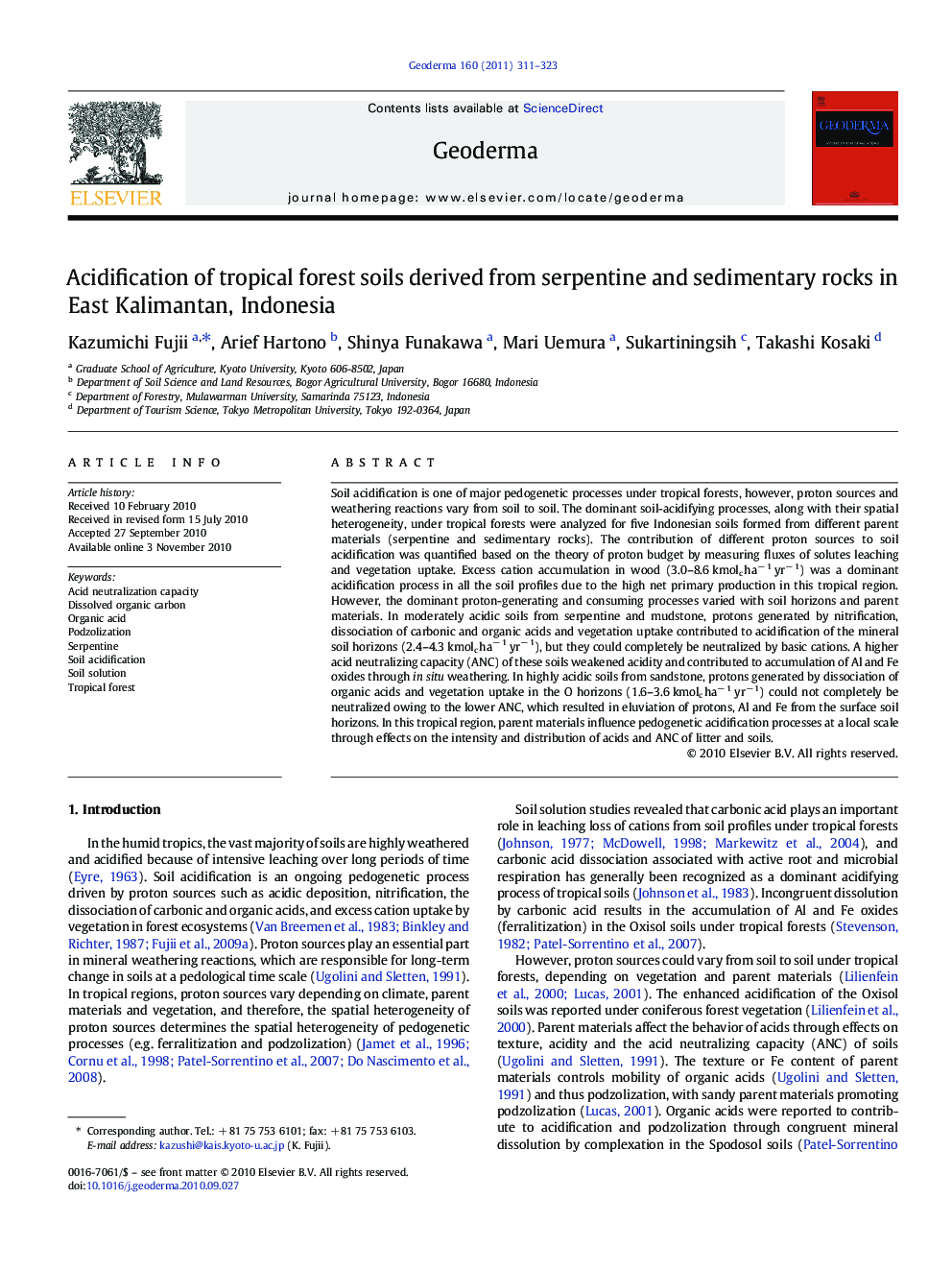| Article ID | Journal | Published Year | Pages | File Type |
|---|---|---|---|---|
| 4574247 | Geoderma | 2011 | 13 Pages |
Soil acidification is one of major pedogenetic processes under tropical forests, however, proton sources and weathering reactions vary from soil to soil. The dominant soil-acidifying processes, along with their spatial heterogeneity, under tropical forests were analyzed for five Indonesian soils formed from different parent materials (serpentine and sedimentary rocks). The contribution of different proton sources to soil acidification was quantified based on the theory of proton budget by measuring fluxes of solutes leaching and vegetation uptake. Excess cation accumulation in wood (3.0–8.6 kmolc ha− 1 yr− 1) was a dominant acidification process in all the soil profiles due to the high net primary production in this tropical region. However, the dominant proton-generating and consuming processes varied with soil horizons and parent materials. In moderately acidic soils from serpentine and mudstone, protons generated by nitrification, dissociation of carbonic and organic acids and vegetation uptake contributed to acidification of the mineral soil horizons (2.4–4.3 kmolc ha− 1 yr− 1), but they could completely be neutralized by basic cations. A higher acid neutralizing capacity (ANC) of these soils weakened acidity and contributed to accumulation of Al and Fe oxides through in situ weathering. In highly acidic soils from sandstone, protons generated by dissociation of organic acids and vegetation uptake in the O horizons (1.6–3.6 kmolc ha− 1 yr− 1) could not completely be neutralized owing to the lower ANC, which resulted in eluviation of protons, Al and Fe from the surface soil horizons. In this tropical region, parent materials influence pedogenetic acidification processes at a local scale through effects on the intensity and distribution of acids and ANC of litter and soils.
Research Highlights► The pedogenetic acidification processes under tropical forests in East Kalimantan were successfully characterized for the soils from different parent materials using proton budget theory. ► The contribution of different proton sources to soil acidification is shown to vary from soil to soil, depending on parent materials and vegetations. ► Parent materials are shown to have a strong influence on pedogenetic acidification processes at a local scale through their effects on the intensity and distribution of acids and ANC of litter and soils.
